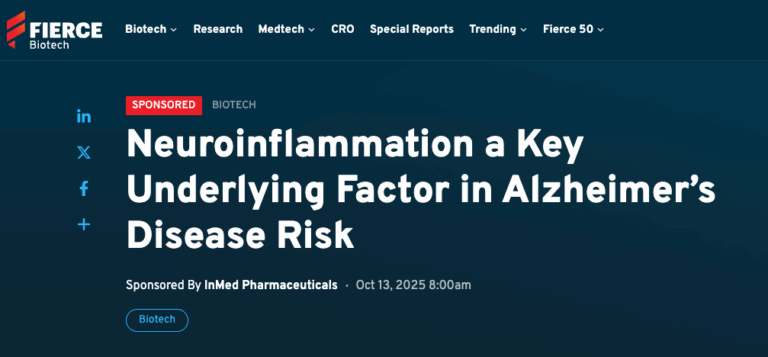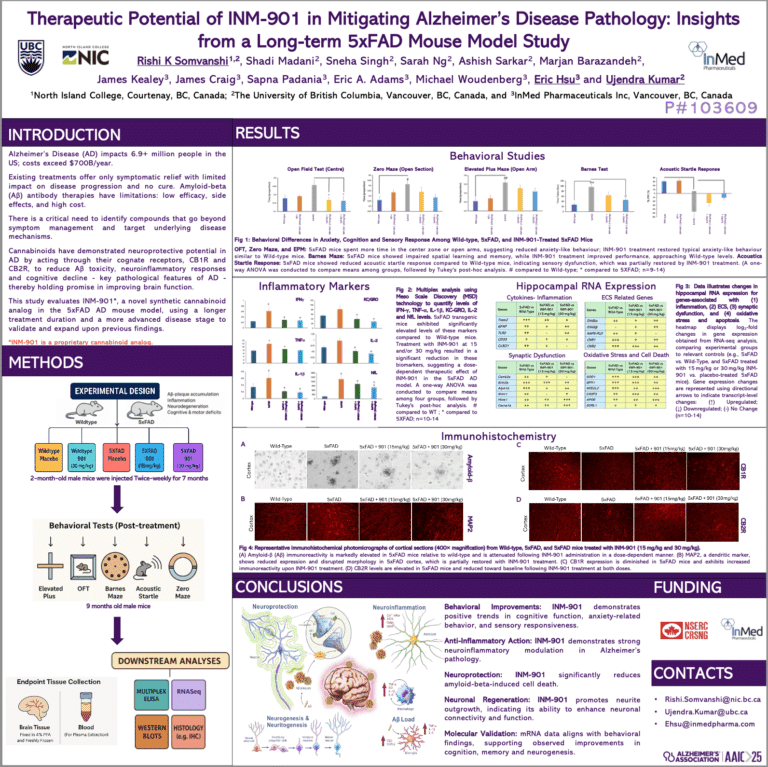Video Replay Now Available: InMed’s CEO, Eric A. Adams, presents at the 2025 Life Sciences Investor Forum.
In the presentation, which was originally published on September 18, 2025, CEO Eric A. Adams gives a progress update on InMed’s pipeline including recent data from the Company’s leading pharmaceutical program INM-901 in the treatment of Alzheimer’s disease. The new preclinical data was recently presented at the Alzheimer’s Association International Conference (AAIC) 2025, the world’s leading forum for Alzheimer’s disease and dementia research.
The most recent INM-901 Alzheimer’s disease preclinical study measured hippocampal RNA expression, inflammatory markers, immunohistochemistry and behavioral differences following long-term treatment with INM-901 and as compared to healthy and to untreated diseased subjects in a well-established model.
Summary of INM-901 Long-term 5xFAD study:
- Hippocampal RNA Expression – Several genes associated with inflammation, the endocannabinoid system, synaptic dysfunction and oxidative stress and apoptosis (cell death) were evaluated following treatment. In some cases, INM-901 demonstrated a dose-dependent trend towards a return to non-diseased baseline following treatment.
- Inflammation – Treatment with INM-901 resulted in a significant reduction in the inflammatory biomarkers IFN-γ, TNF-α, IL-1β, KC-GRO, IL-2 and NfL, suggesting a dose-dependent therapeutic effect in neuroinflammation.
- Immunohistochemistry – Amyloid-beta (Aβ) immunoreactivity is reduced following INM-901 treatment in a dose-dependent manner. MAP2, the microtubule-associated protein 2 is a protein found in the neurons, especially in the dendrites and is involved in neurite outgrowth and signal transduction of the neurons, is partially restored with INM-901 treatment.
- Behavioral – Cognitive function, anxiety-related behavior, and sensory responsiveness were restored or approaching normal following INM-901 treatment.






